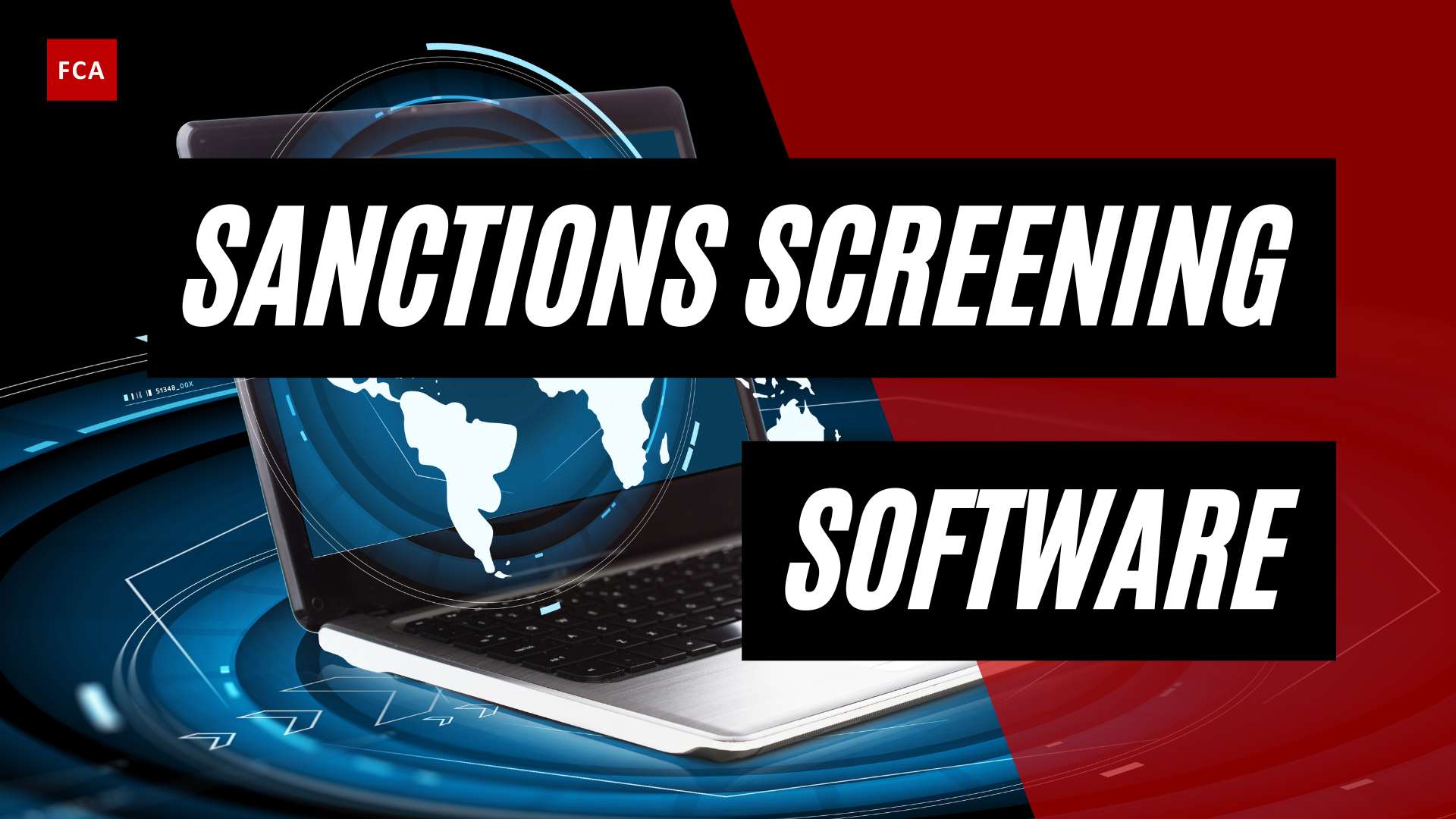Understanding AML Data Analysis Tools
In the complex and dynamic world of anti-money laundering (AML), leveraging the power of data analytics is a necessity. AML data analysis tools, designed to aid financial institutions in the detection and prevention of financial crimes, play a pivotal role in this realm.
Definition and Importance
AML data analysis tools are advanced software solutions that aid in the detection and prevention of money laundering activities. They help financial institutions enhance their AML compliance by efficiently monitoring transactions, identifying suspicious activities, and complying with regulatory requirements such as the Bank Secrecy Act (BSA) and the USA PATRIOT Act.
The importance of these tools lies in their ability to analyze vast amounts of data in real-time, providing alerts and notifications to compliance teams for further investigation. This makes them an integral part of an institution’s arsenal in the fight against financial crime, as discussed in our article on advanced data analysis in AML.
Key Features of AML Tools
AML data analysis tools leverage cutting-edge technologies like artificial intelligence (AI) and machine learning to enhance the accuracy and effectiveness of detecting potential money laundering activities (Financial Crime Academy). By recognizing patterns in data and predicting future trends, they allow for more precise and proactive identification of suspicious activities. More about this can be found in our piece on predictive analytics in anti-money laundering.
Another key feature of AML tools is their capacity to automate complex processes, significantly reducing false positives and the manual workload of compliance officers within financial institutions (Financial Crime Academy). This enables institutions to allocate their resources more efficiently and focus their efforts on high-risk cases.
In addition to these features, AML tools are adaptable and scalable, allowing them to evolve along with changing regulatory requirements and increasing data volumes. This ability to adapt is crucial in the fast-paced and ever-evolving landscape of AML compliance, as highlighted in our article on big data analysis in AML.
In summary, AML data analysis tools are an essential part of any robust AML compliance program, providing the means to effectively detect, prevent, and report financial crimes. By utilizing these tools, financial institutions can not only meet their regulatory obligations but also contribute to the broader fight against money laundering and financial crime.
Role of AI in AML Tools
Artificial Intelligence (AI) and its subset, Machine Learning (ML), play a pivotal role in enhancing the functionality and effectiveness of AML data analysis tools. They help financial institutions to efficiently detect suspicious activities, thereby improving anti-money laundering (AML) compliance.
AI and Machine Learning Capabilities
AML tools powered by AI and ML technologies consolidate, cleanse, and correlate data from multiple sources to uncover potential money laundering activities effectively. These tools can sift through vast amounts of data, identify patterns and anomalies, and alert compliance teams to potential risk areas for further investigation.
The inherent ability of machine learning to learn from data patterns and improve over time enhances risk assessment and investigation efficiency. This feature allows organizations to identify suspicious activities and behaviors more effectively, thereby strengthening their AML compliance framework.
For more on this subject, take a look at our deep-dive into advanced data analysis in AML, where we explore the use of cutting-edge techniques such as machine learning and artificial intelligence in AML compliance.
Predictive Analytics in AML
Predictive analytics, another aspect of AI, is increasingly being harnessed by AML data analysis tools. By forecasting potential outcomes based on historical and real-time data, predictive analytics can help identify possible exposure to money laundering risks before they materialize. This proactive approach allows institutions to take preventative measures, thereby minimizing the potential impact of such illicit activities.
AI-powered predictive analytics can also improve the precision of AML detection models by identifying complex patterns and relationships in large data sets. This can result in more accurate alerts, fewer false positives, and more efficient use of resources dedicated to AML compliance. To delve deeper into this topic, check out our article on predictive analytics in anti-money laundering.
In conclusion, AI and ML capabilities significantly enhance the performance and accuracy of AML data analysis tools. These technologies, combined with predictive analytics, offer a powerful solution to combat money laundering and ensure regulatory compliance. As the technology continues to evolve, it’s anticipated that AI will play an increasingly prominent role in AML compliance efforts.
AML Tools in Action
AML data analysis tools have evolved to become an essential part of compliance and risk management operations within financial institutions. Let’s delve into how these tools function in two critical areas: transaction monitoring and alerting, and customer due diligence processes.
Transaction Monitoring and Alerting
One of the primary applications of AML data analysis tools is transaction monitoring and alerting. These tools can analyze vast amounts of data in real-time, providing alerts and notifications to compliance teams for further investigation (Financial Crime Academy). This feature is invaluable in identifying unusual or suspicious activity that may indicate money laundering attempts.
By leveraging automation and pattern recognition, AML tools can significantly reduce false positives and the manual workload of compliance officers within financial institutions (Financial Crime Academy). This enables the compliance team to focus on more complex tasks that require human intervention, thereby improving the overall efficiency of the AML process.
AML software solutions integrate various data sources, including internal transaction data, customer information, and external watchlists, to generate comprehensive risk profiles and detect potential money laundering activities within an organization. This use of big data analysis in AML and network analysis in anti-money laundering enhances the ability of the tools to accurately identify high-risk transactions.
Customer Due Diligence Processes
Another crucial function of AML data analysis tools is aiding in customer due diligence (CDD) processes. CDD is a critical element of AML compliance, involving the verification of customer identities, the assessment of their risk profiles, and ongoing monitoring of their transactions.
AML tools streamline this process by automating data collection and analysis, making it easier for institutions to carry out regular CDD and enhanced due diligence (EDD) checks. These tools allow for real-time updates to customer risk profiles, enabling faster identification and mitigation of potential risks.
Furthermore, by integrating AML tools with predictive analytics in anti-money laundering, institutions can gain insights into future risks based on historical data and trends. This proactive approach aids in the early detection of potential money laundering activities, allowing for timely intervention and prevention.
In conclusion, the use of AML data analysis tools in transaction monitoring and customer due diligence processes is a game-changer in the fight against financial crime. By implementing these tools, financial institutions can better adhere to regulations, protect their reputation and assets, and prevent money laundering activities (Financial Crime Academy).
Notable AML Data Analysis Tools
When it comes to leveraging data for anti-money laundering (AML) efforts, several robust tools have earned their stripes in the industry. In this section, we’ll delve into the features and benefits of three such tools: the Jumio Platform, ComplyAdvantage Solution, and the AML Platform by Nice Actimize.
Jumio Platform
The Jumio Platform is renowned for its AI-driven services. It offers identity verification for both new and existing users, performs risk assessments, and aids organizations in meeting compliance mandates (Jumio). The platform’s advanced data analysis capabilities promote efficiency and accuracy in AML processes, making it a valuable tool for professionals in this sphere. For more on advanced data analysis in AML, see our article on advanced data analysis in aml.
ComplyAdvantage Solution
Next up is the ComplyAdvantage Solution, a powerful AML risk detection tool that utilizes artificial intelligence. This tool is known to reduce false positives by up to 70% and shorten onboarding cycle times by up to 50%. Its capabilities, such as graph network detection, identity clustering, and dynamic thresholds, significantly improve the efficiency of bank’s compliance workloads. To understand how such techniques contribute to AML efforts, see our article on data mining techniques for aml.
AML Platform by Nice Actimize
Last but not least, the AML Platform by Nice Actimize offers cutting-edge technology to combat financial crimes. This tool assists in detecting suspicious activities and transactions, significantly bolstering an organization’s AML measures (Financial Crime Academy). To explore how statistical analysis aids in the identification of such activities, see our article on statistical analysis in anti-money laundering.
These exemplary AML data analysis tools, with their distinct capabilities, exemplify the pivotal role of technology in modern AML efforts. By leveraging such tools, organizations can enhance their ability to detect and prevent financial crimes effectively. For more on this topic, see our article on aml data analysis best practices.
Integrating AML Tools in Compliance Framework
AML data analysis tools play a crucial role in strengthening the compliance framework of financial institutions. The incorporation of these tools should be executed as part of a risk-based approach, tailored to the specific requirements and risk profile of an institution.
Risk-Based Approach
Implementing AML software should be part of a broader AML compliance framework, factoring in the risks faced by a financial institution. AML tools enable institutions to consolidate, cleanse, and correlate data from multiple sources, thereby uncovering potential money laundering activities effectively. This is achieved through methods such as advanced data analysis in AML, network analysis in anti-money laundering, and anomaly detection in AML data.
The tools can trace and detect unusual activity involving valuable assets as well as smaller, individual transactions. They are designed to facilitate the implementation of a risk-based approach by allowing users to securely collect identity information and adjust friction based on real-time risk signals, enabling them to build user flows to collect customer information without any coding required.
Compliance with AML Regulations
In addition to enhancing the effectiveness of a risk-based approach, AML data analysis tools are pivotal to ensure compliance with AML regulations. They offer features such as transaction monitoring, customer due diligence (CDD), enhanced due diligence (EDD), sanctions and watchlist screening, and suspicious activity reporting. These capabilities strengthen AML compliance efforts and mitigate financial crime risks (SEON).
Complying with AML regulations is not only a legal necessity but also vital to protect a financial institution’s reputation and assets. Thus, the integration of AML tools into the compliance framework is a strategic move towards more efficient and effective risk management.
For institutions looking to enhance their AML compliance, it is important to stay abreast of AML data analysis best practices. By leveraging advanced tools and techniques, institutions can better prevent money laundering activities, adhere to regulations, and safeguard their operations.
The Future of AML Data Analysis Tools
As we navigate through the digital era, AML data analysis tools are proving to be increasingly significant in combating financial crime. With technological advancements and emerging trends shaping the future of these tools, the next few years promise transformative changes in the anti-money laundering landscape.
Emerging Trends and Predictions
Artificial Intelligence (AI) and Machine Learning (ML) capabilities are set to enhance AML tools further. McKinsey projections suggest that AI could lead to a 22% reduction in bank operating expenses by 2030, potentially saving up to $1 trillion in future years Medium. This is largely attributed to predictive analytics’ ability to identify illicit activities before they occur, leading to improved identification systems, accurate results, and a reduction in false negatives.
By 2024, cloud-based AML systems are expected to provide greater scalability and flexibility, enabling organizations to adapt swiftly to evolving compliance requirements Medium. In addition, big data analytics will facilitate comprehensive risk assessments by analyzing larger datasets.
Moreover, the global software market is anticipated to grow at a compound annual growth rate of 5.27% from 2024 to 2028, generating $858.10 billion in sales. This growth is largely attributed to the latest and most dynamic developments in fraud detection tools.
Impact of Technological Advancements
Technological advancements are set to revolutionize AML data analysis tools in several ways. For instance, blockchain technology is poised to transform AML operations by tracking activities, screening identities, and documenting transactions.
Financial institutions are increasingly leveraging AML software to screen customers, support data analysis, detect fraud, secure fund selections, and ensure safe deal-making. According to Medium, 86% of financial services users of AI believe that this technology will be crucial to their business success in the coming years.
Another key technological advancement is the integration of biometric verification technology in AML software, which significantly enhances customer screening processes. This technology reduces the risk of identity fraud and simplifies the Know Your Customer procedure. The global biometric system market is expected to grow at a compound annual growth rate of 14.1%, from $42.9 billion in 2022 to $82.9 billion by 2027.
The future of AML data analysis tools is indeed promising, with technological advancements and emerging trends set to transform the way we combat money laundering. By staying ahead of these trends and integrating the latest technologies, organizations can strengthen their AML processes and contribute significantly towards a more secure financial landscape. For more insights into the use of advanced data analysis in AML, consider exploring our articles on advanced data analysis in AML and big data analysis in AML.








